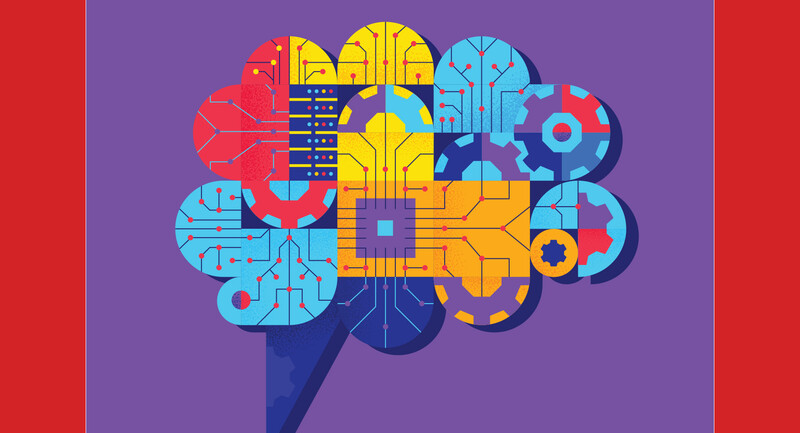A reflective principal said to me recently that he was questioning the emphasis on pervasive use of technology in classrooms. "So often, I feel like what I'm seeing is use of a gadget for the sake of a gadget," he said. "I can't tell what meaningful learning purposes or goals the device is serving. And I worry that technology weakens the student-teacher connection rather than strengthening it."
I understand his concern. I've felt much the same in many instances, but I don't think tech use in schools has to be that way. In fact, I think it's imperative we understand the difference between technology as the star of the lesson and technology as the servant of learning.
I first started thinking seriously about the promises and challenges of technology in schools about 20 years ago when I read "Changing the Conversation about Teaching, Learning, and Technology: A Report on 10 Years of ACOT Research" (1995), a study published by Apple Computers summarizing the company's decade-long venture into K–12 classrooms to integrate computers into teaching and learning. The study is often referred to as the ACOT study—Apple Classrooms of Tomorrow.
I had been a public school teacher for more than 20 years, but was new to the wider world of education and to being on a university's faculty. I still harbored the sense that all schools were relatively open to innovation, the way the school in which I'd taught for 20 years was. So I was struggling with why it was such a challenge for many teachers to translate ideas into classroom practice that mirrored the intent of those ideas.
When I first read about the experiences of the Apple representatives in classrooms where teachers were being "encouraged" to use computers as part of their teaching, I was riveted. I profoundly understood the concept of a Eureka moment as I read about both the overt and covert resistance the researchers encountered in many of the teachers they were working with. Not only did the resistance seem familiar, but more important, I began to understand its genesis. The Apple representatives were not asking teachers, as I had assumed, to make a small modification in their practice. Rather, they were calling for a mind-shift that would up-end the teachers' professional worlds.
The researchers involved in the study found that students were, by in large, quick to embrace the possibilities of using computers. The teachers, however, were far less receptive at first—they were cautious, if not resistant or angry. The Apple classroom representatives had a sound sense of ways in which the new machines could extend the classroom, elevate teaching, and deepen learning. Yet despite their work as on-site coaches with teachers over an extended time, the vision they tried to communicate initially remained largely in their own heads.
The upshot of the ACOT research was that truly effective use of computers required a transformation of teacher understanding of teaching and learning. That was my epiphany. The researchers' journey toward meaningful use of technology in classrooms was a long one, and in the end, required participating teachers to question and then restructure their sense of what it means to teach.
Stages of Transformation
In particular, some of the teachers in the study eventually shifted from seeing instruction as teacher-centered and didactic to learner-centered and interactive. They stopped seeing themselves as fact-teller and reigning expert and began understanding their role as a collaborator and learner. Similarly, they no longer saw the student as a passive listener and learner, but rather as a collaborator and sometimes even an expert. The focus of instruction shifted from seatwork and worksheets to collaborative projects, communication, and expression. Learning was no longer about students accumulating facts and repeating what they'd been told. Instead, it was a process of inquiry, transformation, and seeing connections and relationships. Student success was no longer viewed through a lens of quantity, but rather of quality. Assessment ceased being test-focused and became performance-focused.
As I read the ACOT work, I knew as conclusively as I've ever known anything that these shifts were fundamental to virtually all meaningful change in schools. Later, I would learn that experts in the process of school change call this level of metamorphosis "second-order change." It requires a complete "remodeling" of one's understanding, not just a new coat of paint. It is gut-wrenchingly difficult, stunningly complex—and the only path to creating the schools we need.
The ACOT researchers concluded that teachers ultimately moved, at different rates, through five stages as they reinvented themselves and their work. I'd add a sixth one to the front of the list: Many of the teachers initially experienced a period of resistance—"this won't work"; "it's not appropriate to ask (or tell) us to do this extra thing"; "there are too many students"; "there is not enough time." I know that stage well. I have lived in it myself, and I have seen it in hundreds, if not thousands, of educators.
But here are the official five stages identified in the report:
- Entry—learning the basics of technology.
- Adoption—using the new technology to support traditional instruction.
- Adaptation—integrating the new technology into traditional classroom practice to increase student productivity (for example, word processing and spreadsheets).
- Appropriation—focusing on project-based, interdisciplinary work with the computer as one of many tools.
- Invention—discovering new uses for technology (for example, developing student products that combined multiple technologies and emphasized student understanding).
That's it. That's what it takes for a critical mass of teachers to embrace instructional change and maximize their students' learning potential. That list of transformative stages is where professional growth efforts in schools should be targeted. It's where leaders should continually focus. It is the set of benchmarks by which we as teachers should assess ourselves.
This is the process through which we develop not only tech-savvy teachers, but also culturally responsive ones, teachers who attend to learner differences, teachers who help students learn to read with competence and joy, teachers who help students learn to reason with mathematics, teachers who help students connect the great lessons of history with their own lives, and teachers who lead students to understand the interconnectedness of everything in the world.
But for me, understanding what it takes to bring about second-order change in schools began with the movement to thoughtfully integrate technology into classrooms—and to grow teachers who understand and use technology as though it is the instrument, and not the music.








